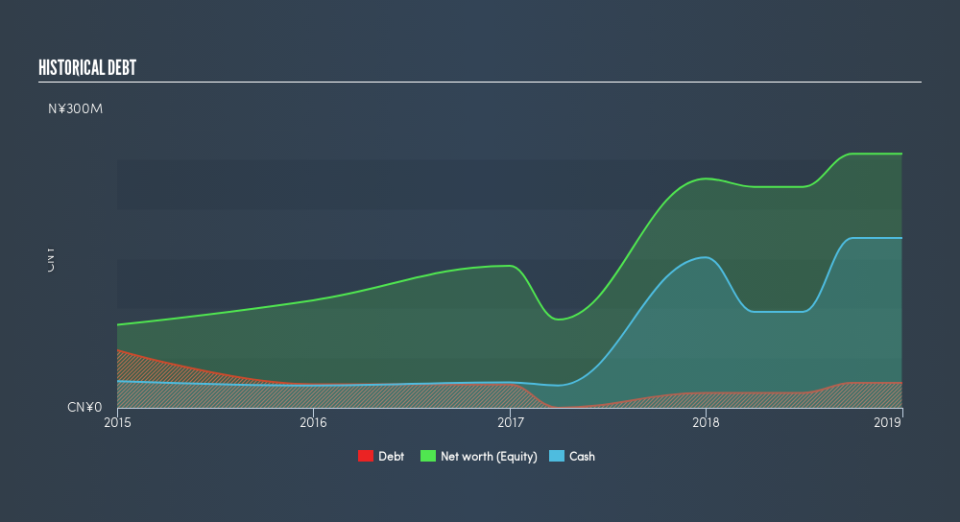Is United Strength Power Holdings (HKG:2337) A Risky Investment?

Some say volatility, rather than debt, is the best way to think about risk as an investor, but Warren Buffett famously said that 'Volatility is far from synonymous with risk.' It's only natural to consider a company's balance sheet when you examine how risky it is, since debt is often involved when a business collapses. We can see that United Strength Power Holdings Limited (HKG:2337) does use debt in its business. But the real question is whether this debt is making the company risky.
When Is Debt Dangerous?
Debt is a tool to help businesses grow, but if a business is incapable of paying off its lenders, then it exists at their mercy. Ultimately, if the company can't fulfill its legal obligations to repay debt, shareholders could walk away with nothing. While that is not too common, we often do see indebted companies permanently diluting shareholders because lenders force them to raise capital at a distressed price. Of course, the upside of debt is that it often represents cheap capital, especially when it replaces dilution in a company with the ability to reinvest at high rates of return. When we examine debt levels, we first consider both cash and debt levels, together.
See our latest analysis for United Strength Power Holdings
What Is United Strength Power Holdings's Debt?
The image below, which you can click on for greater detail, shows that at December 2018 United Strength Power Holdings had debt of CN¥25.0m, up from CN¥15.0m in one year. But on the other hand it also has CN¥170.7m in cash, leading to a CN¥145.7m net cash position.
How Strong Is United Strength Power Holdings's Balance Sheet?
According to the last reported balance sheet, United Strength Power Holdings had liabilities of CN¥60.2m due within 12 months, and liabilities of CN¥7.66m due beyond 12 months. Offsetting this, it had CN¥170.7m in cash and CN¥7.51m in receivables that were due within 12 months. So it can boast CN¥110.4m more liquid assets than total liabilities.
This surplus suggests that United Strength Power Holdings has a conservative balance sheet, and could probably eliminate its debt without much difficulty. Simply put, the fact that United Strength Power Holdings has more cash than debt is arguably a good indication that it can manage its debt safely.
In addition to that, we're happy to report that United Strength Power Holdings has boosted its EBIT by 40%, thus reducing the spectre of future debt repayments. There's no doubt that we learn most about debt from the balance sheet. But you can't view debt in total isolation; since United Strength Power Holdings will need earnings to service that debt. So if you're keen to discover more about its earnings, it might be worth checking out this graph of its long term earnings trend.
Finally, while the tax-man may adore accounting profits, lenders only accept cold hard cash. United Strength Power Holdings may have net cash on the balance sheet, but it is still interesting to look at how well the business converts its earnings before interest and tax (EBIT) to free cash flow, because that will influence both its need for, and its capacity to manage debt. Looking at the most recent three years, United Strength Power Holdings recorded free cash flow of 40% of its EBIT, which is weaker than we'd expect. That weak cash conversion makes it more difficult to handle indebtedness.
Summing up
While it is always sensible to investigate a company's debt, in this case United Strength Power Holdings has CN¥146m in net cash and a decent-looking balance sheet. And it impressed us with its EBIT growth of 40% over the last year. So is United Strength Power Holdings's debt a risk? It doesn't seem so to us. Over time, share prices tend to follow earnings per share, so if you're interested in United Strength Power Holdings, you may well want to click here to check an interactive graph of its earnings per share history.
When all is said and done, sometimes its easier to focus on companies that don't even need debt. Readers can access a list of growth stocks with zero net debt 100% free, right now.
We aim to bring you long-term focused research analysis driven by fundamental data. Note that our analysis may not factor in the latest price-sensitive company announcements or qualitative material.
If you spot an error that warrants correction, please contact the editor at editorial-team@simplywallst.com. This article by Simply Wall St is general in nature. It does not constitute a recommendation to buy or sell any stock, and does not take account of your objectives, or your financial situation. Simply Wall St has no position in the stocks mentioned. Thank you for reading.

 Yahoo Finance
Yahoo Finance 
